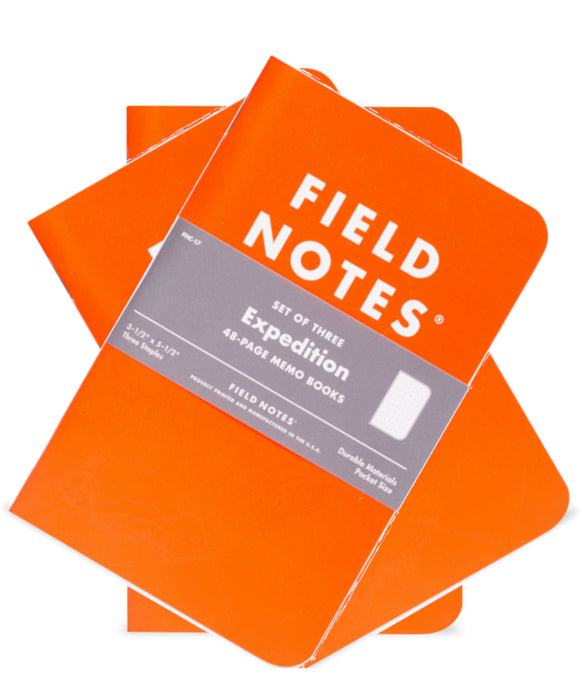VIRTUALLY INDESTRUCTIBLE
FNC-17 marks the start of our fifth year of our Quarterly Editions. In that time, weve explored a wide variety of papers, colors, and printing techniques, but with this new Expedition edition, for the first time, weve actually expanded the type of paper used in our notebooks.
Aesthetically, youll find an all-new design with plenty to like: a hi-visibility Antarctic Survey Orange front cover and Polar Night Black back cover, with a subtle varnish effect featuring a topographic map of Antarctica. The body pages feature our popular dot-graph paper printed in light gray.
But the real innovation here is the paper. Its maybe not even fair to call it paper. The whole book is printed on Yupo Synthetic paper, an amazing tearproof and waterproof paper extruded from polypropylene pellets in Chesapeake, Virginia. We could go on and on about our new notebooks durability and incredible properties (especially in concert with the new Space Pen, FN-19), and we will, in this series of 12 (reasonably) scientific tests:
TEST 1: WATERPROOF
TEST 2: VISIBILITY
TEST 3: WIND RESISTANCE
TEST 4: BALLISTICS
TEST 5: VACUUM
TEST 6: TENSILE STRENGTH
TEST 7: COMPRESSION
TEST 8: ACID RESISTANCE
TEST 9: FLAME RESISTANCE
TEST 10: EXTREME TEMPERATURE
TEST 11: ELECTROMAGNETIC WAVES
TEST 12: ELECTRICAL RESISTANCE
Months of development and testing were required to get these books just right, and wed like to thank Yupo for their extensive support, as well as the great printers and ink technicians that pitched in to help.
The majority of our customers may not test the limits of these notebooks, but the map of Antarctica is neither hyperbole nor coincidence. Well be sending the Expedition edition to the South Pole with explorer Ben Saunders as he and his team retrace Captain Robert Falcon Scotts ill-fated journey to the Pole and back, on foot and unsupported, starting in October 2013.
Note: Synthetic paper is nonporous and doesnt absorb ink like our conventional papers. Ballpoint pens, pencils, or fine tip Sharpies work best.

